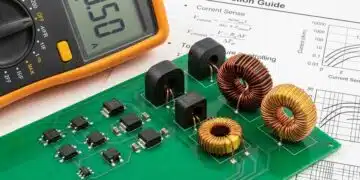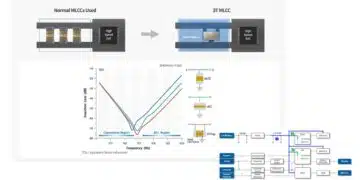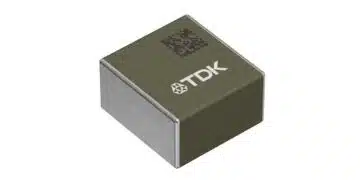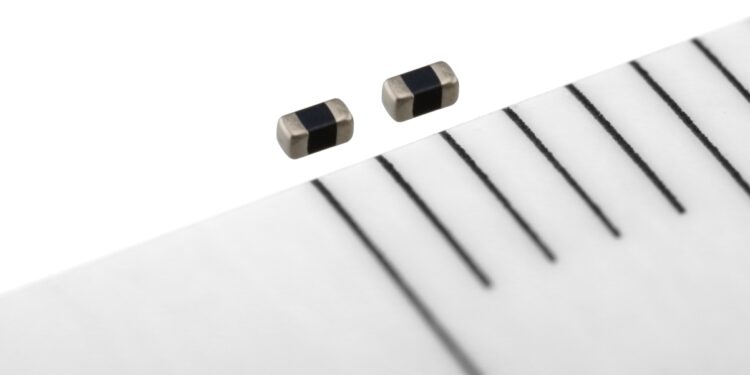TDK Corporation expands its product lineup with a new chip varistor, type AVRH10C101KT4R7YA8, for automotive application Ethernet with strong resistance to ESD. Mass production will begin in March 2022.
Utilizing high-precision multilayer technology and optimizing the manufacturing process and process design, the product implements a tight tolerance of 4.7 ± 0.57 pF in the capacitance range and strong resistance to voltage ESD up to 25 kV.
Moreover, it delivers the performance required for ESD protection devices by OPEN Alliance 100BASE-T1 ESD Device Specification ver.2.0 and is compliant with this standard. It achieves the industry’s smallest size of 1005 (1.0 x 0.5 x 0.5mm) as a chip varistor for automobile, supports a maximum circuit voltage of up to 70 V, and has a high operating temperature range from -55 ℃ to +150 ℃.
As ADAS (advanced driver-assistance systems) and even more advanced autonomous driving systems require high-speed and low-delay telecommunication between ECUs, Ethernet for automotive applications is used as telecommunications infrastructure. This product provides ESD protection to automotive equipment without interfering with high-speed communication between ECUs. In addition to support for high-speed communications required for future automotive equipment, the new product offers higher reliability by achieving strong ESD resistance.
Moving forward, TDK will continue providing customers with flexible support to design their diversified automotive equipment by expanding the product lineup through further downsizing, increased operating voltage, and expansion of capacitance range, etc.
Glossary
- IEC61000-4-2: IEC61000-4-2: An immunity standard for electrostatic discharge established by the International Electrotechnical Commission (IEC)
- ADAS: Advanced driver-assistance systems
- ECU: Electronic Control Unit
- ESD: Electrostatic discharge
Main features and benefits
- Low capacitance and tight tolerance
- ESD resistance of 25 ㎸
- Small footprint saves space
- Expansion of operating areas due to temperature range up to 150 ℃
- Compliance with OPEN Alliance 100BASE-T1 ESD Device Specification ver.2.0
Main applications
- Ethernet for automotive application
































